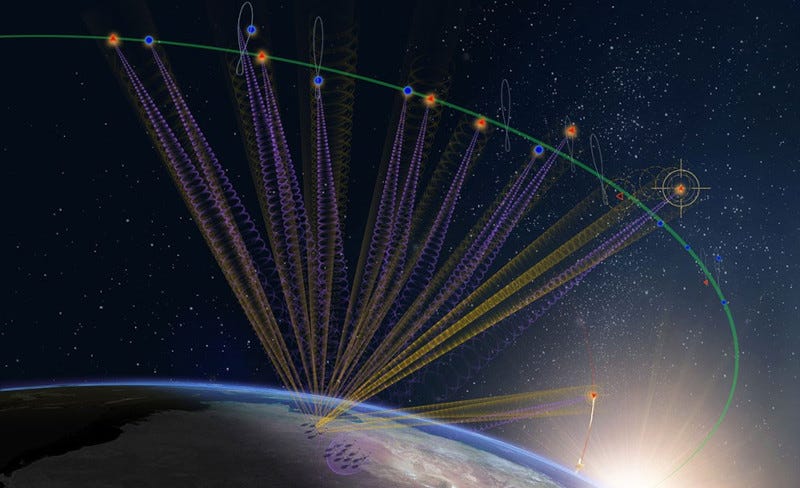A technology demonstration for a highly deep-space tracking radar system has been conducted by Northrop Grumman Corporation and U.S. Space Force (USSF) Space Systems Command’s (SSC) Deep-Space Advanced Radar Capability (DARC). The demonstration was conducted at DARC Site 1 in Western Australia using multiple ground-based antennas.
“Northrop Grumman’s DARC will provide a strategic advantage at a scale never before achieved in global space domain awareness."
Kevin Giammo, Northrop Grumman
DARC’s calibrated antenna arrays operated as a single system to successfully characterize the movement of multiple satellites and demonstrate the effectiveness of the system’s precision radar tracking technology. This is a significant step forward as the system progresses towards Site 1’s completion and operational capability.
During its demonstration, DARC successfully utilized seven of the 27 antennas at DARC Site 1, bringing the program a significant step closer to full capability. it also demonstrated mission-enabling technology capable of tracking spacecraft that present potential threats to space assets or the U.S. homeland and allies and sustained a multi-week campaign of data collection, analysis, and adjustment to confirm successful calibration and operational capability.

“Northrop Grumman’s DARC will provide a strategic advantage at a scale never before achieved in global space domain awareness," said Kevin Giammo, Northrop Grumman director of Space Surveillance and Environmental Intelligence. "Its ability to track multiple small moving objects over 22,000 miles above earth will offer unmatched persistent and comprehensive capability as the world’s premier deep-space radar tracking system.”
DARC is a next-generation ground system enabling security and stability in deep space on a global scale. It is specially designed to be the world’s most advanced radar for tracking and characterizing objects in deep space. Once complete, DARC’s ground-based sensor network will provide full global coverage protecting U.S. and allied satellites in geostationary orbit, a critical area of space traditionally used by some of the most important military and commercial satellites. Unlike telescopic systems which perform this mission today, DARC is not impacted by clouds and can operate 24/7 – during nighttime and daylight hours and all-weather conditions.





